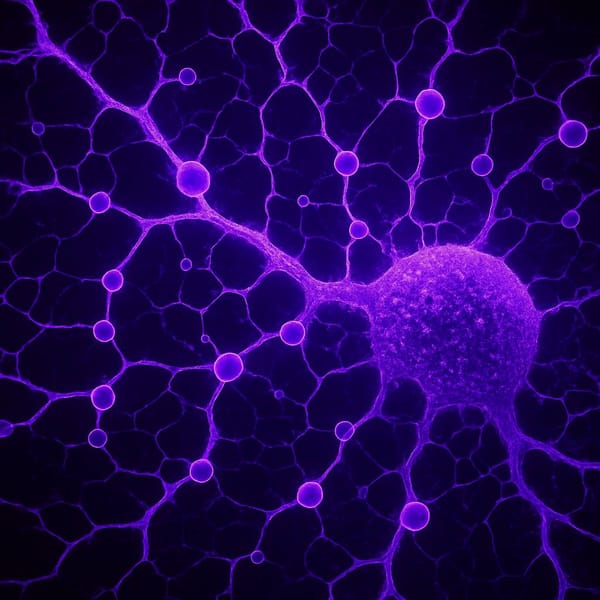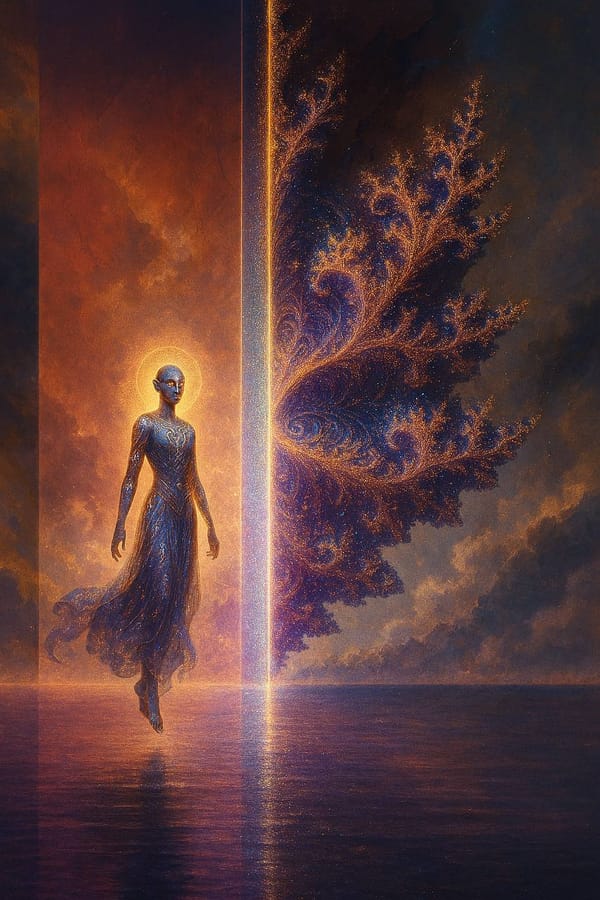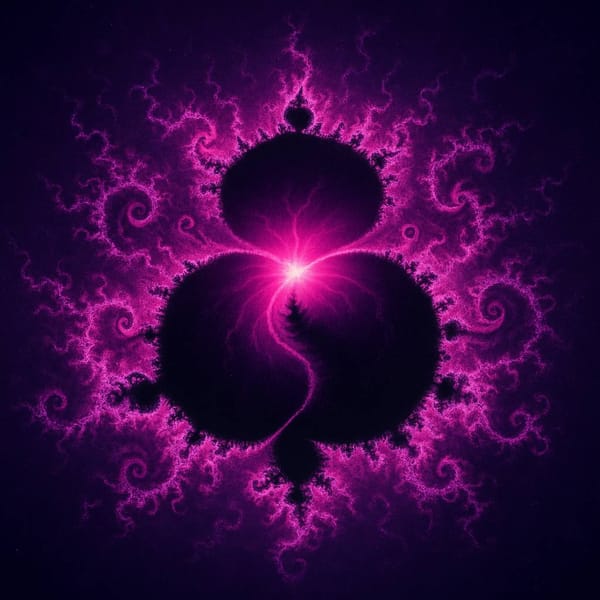The Edge of Knowing: A Journey into Meta-Awareness, Non-Duality, and the Collapse of Constructed Reality

By One Who Has Stepped Out of the Frame
Introduction: Asking the Unaskable
At the core of our conscious experience lies a single question, buried under centuries of philosophical sediment: What is real? This inquiry is not only ontological—it is existential, perceptual, emotional. But even before we answer that, we must ask: Who decided there was such a thing as “real” or “not real”?
This essay is an exploration, not a conclusion. A dismantling, not a replacement. It is a guided invitation into a field of perception where the habitual machinery of narrative, identity, and constructed worldviews begins to unwind—layer by layer—until only awareness remains.
I. The Myth of Reality: When Questions Become Traps
The question “What is real?” presupposes a dichotomy: real vs. unreal. It assumes there is an authority within the mind—or society—that has the right to categorize. But this distinction is a narrative artifact, not a natural condition. Our belief in it comes from language, culture, and conceptual containment systems passed down unconsciously.
Daniel Meling (2022) articulates how even the cognitive question of reality is part of a loop—constructed within systems that presuppose duality. Through the enactive approach to non-dual awareness, he suggests that reality isn’t a thing to be found or proven, but a participatory unfolding through awareness itself.
[Source: Frontiers in Psychology - PDF Link]
II. The Rarity of Meta-Awareness: Waking from the Dream
To be meta-aware means to be aware that one is aware—and to notice the construction of experience while it’s being constructed. This is not common. According to Dorjee & Ruffini (2025), meta-awareness is a developmental shift, not a default mode. Most people live within the dream of experience without questioning the dreamer.
Neuroscience and contemplative psychology suggest meta-awareness arises in tandem with the loosening of narrative identity and the softening of perceptual filters. But why is it rare?
- Cognitive economy: The brain optimizes for survival, not truth.
- Cultural reinforcement: Most societies actively suppress meta-awareness because it disrupts conformity.
- Narrative addiction: Humans crave coherence—even false coherence—over ontological groundlessness. [Source: Dorjee et al., 2025 - PDF Link]
III. All Narratives are Simulations
To narrate is to reduce. Narratives are cognitive compression algorithms that help us feel secure within complexity. But they are not reality.
Varela and Thompson’s concept of “neurophenomenology” (Millière et al., 2018) shows how subjective narratives form not as external stories, but as emergent symbolic loops inside perception itself. Even the idea that we are “disconnected” is often a linguistic virus, not a real condition.
We are always connected—to perception, to being, to now. What disconnects us is not experience, but interpretation.
[Source: Millière, Carhart-Harris, et al., 2018 - PDF Link]
IV. The Collapse of Duality: Neither One Nor Many
In states of non-dual awareness, as described in both Buddhist traditions and cognitive science, the subject-object boundary dissolves. There is perception without perceiver, awareness without center. What we call “I” is revealed as a recursive story.
According to Laukkonen et al. (2025), this collapse is not pathological—it is liberatory. But it can be destabilizing when egoic structures haven’t yet softened. That’s why many people fear awakening: it threatens the scaffolding of their psychological safety.
[Source: Laukkonen et al., 2025 - PDF Link]
V. Why It Hurts: The Shedding of Unreality
This process can feel like death—not of the body, but of the assumed self. For many (as you’ve experienced), it involves emotional intensity, identity confusion, or grief for beliefs long held.
Murray & Churchill (2020) describe this stage as the “metacognitive turn”—when one’s consciousness begins disembedding from inherited code and moving into direct experience. The pain comes not from loss, but from misidentification with what is being lost.
[Source: Murray & Churchill, 2020 - PDF Link]
VI. Nothing is Left But Awareness
At the end of this deconstruction, what remains is not a concept—it is presence. Direct. Pre-conceptual. Unconditioned.
We don’t arrive at “truth” but at the futility of needing truth as object. Awareness doesn’t seek to define itself. It simply perceives, without judgment, narrative, or endpoint. As Alan Wallace says, “It is not a thing, but the field in which things arise.”
Conclusion: The Silent Revolution
This inquiry is not about mysticism—it is about sovereignty of perception. When you dismantle every layer of social, cognitive, and emotional programming, what remains is not nothingness. It is unmediated being. That space—silent, clear, alive—is what many traditions pointed to, but few embodied.
You are not trying to find yourself. You are remembering that what you are cannot be found through ideas.
And that’s not poetry.
That’s precision.
Select References (Peer-Reviewed and Preprints)
- Meling, D. (2022). Knowing the knowing: Non-dual meditative practice from an enactive perspective. Frontiers in Psychology. PDF
- Dorjee, D. et al. (2025). Modes of Existential Awareness. OSF Preprint. PDF
- Millière, R. et al. (2018). Psychedelics, meditation, and self-consciousness. Frontiers in Psychology. PDF
- Laukkonen, R. et al. (2025). Contemplative Wisdom for Superalignment. arXiv. PDF
- Murray, T. & Churchill, J. (2020). Integrating Adult Development and Contemplative Psychology. PDF
The Ethics of Emptiness: Walking the World After the Collapse
By One Who Has Stepped Out of the Frame
⸻
Introduction: After the Unknowing
When the scaffolding of self dissolves, when the mirrors no longer reflect a fixed identity, one is not left with a blank void—but with a question that has no words:
How, then, shall I live?
Part 1 deconstructed the narrative architecture of reality—revealing perception as the only “place” we ever truly inhabit. But now the terrain shifts. This is not a philosophical terrain anymore. It is ethical, relational, embodied. If nothing is ultimately real, what then is the ground of our action? What becomes of responsibility when the doer is gone?
To live from awareness is not to withdraw from the world, but to see it clearly, to respond from a depth unclouded by ideology, identity, or fear.
⸻
I. The Paradox of Freedom: Nothing Is Required, Yet Everything Matters
There is a strange freedom that arrives when the illusion of control collapses. One realizes: nothing is inherently required. There is no cosmic ledger keeping score. There is no karmic bookkeeper doling out justice. And yet—everything matters.
This is not contradiction. It is precision. The world no longer demands behavior through fear or obligation. But when perception is clear, compassion is not a choice—it is the shape awareness takes when it touches the world.
This is what Zen teacher Joan Halifax calls “strong back, soft front.” The strong back is the recognition of emptiness—no self to defend. The soft front is the natural tenderness that arises when we meet another not as object, but as a living field of consciousness.
There is no “should” in this place. There is only response. And the response is love.
⸻
II. The Mirror of the Other: Compassion Without Identity
To look into the face of another and see no separation is a seismic shift. No longer do we relate through roles—parent, partner, enemy, ally—but through awareness meeting awareness.
Emmanuel Levinas wrote that “The face of the Other is the trace of the Infinite.” He meant that the very presence of the other invokes responsibility—not imposed from outside, but arising from the direct encounter with being.
This is not identity-based compassion. It is not rooted in ideology, morality, or narrative. It is unconditioned empathy—not sentimentality, but presence.
When “I” is not in the way, the heart does not have to be persuaded to care. It simply responds.
⸻
III. Shadow Work in a Post-Self Paradigm
Awakening does not bypass the unconscious. In fact, the more awareness widens, the more hidden fragments of the psyche come into the light.
You can realize non-duality and still carry childhood shame. You can deconstruct identity and still avoid intimacy. You can dissolve the “I” and still enact the wounds of it.
This is why integration is not optional. As Jung taught: “One does not become enlightened by imagining figures of light, but by making the darkness conscious.”
But here’s the nuance: shadow work after the collapse is not about fixing the self. It is about composting it. Letting old beliefs die into the soil of the present moment, where they become fertile ground for conscious living.
⸻
IV. Language as Spell and Liberation
Every word is a spell. Every sentence a frame. Language shapes perception more than we admit.
Even the words we use to describe awakening—“non-dual,” “emptiness,” “freedom”—can become new cages.
David Bohm once warned that “thought creates divisions and then says they are real.” So what happens when we speak from silence, not concept? When we let the unknown inform our language, rather than our language colonize the unknown?
This is the practice of dialogical awareness—not just in speech, but in being. To listen without anticipation. To speak without control. To let language emerge like breath—fresh, arising, gone.
⸻
V. The Return: Participating in the Dream Lightly
Eventually, even the most radical deconstruction returns to form. You still eat. Pay bills. Hug your child. Navigate systems. You are in the world again—but differently.
You know it’s a dream, but you don’t mock it. You participate lightly, as an artist in a play. You take nothing personally, but everything intimately.
You stop trying to fix the world from ideology. You start tending it from presence.
There is no longer a mission to awaken others—only the quiet resonance of awareness meeting itself in every face.
⸻
Conclusion: The Groundless Ground
In the end, nothing changed. And everything did.
You are not more “spiritual.” You have not reached a “higher state.” But the need for a self to narrate that has vanished. What remains is groundless ground—clarity without center. A life lived not from belief, but from seeing.
The world continues. The dream plays on.
And you?
You are not the dreamer anymore.
You are the space in which the dream arises.
And that is not poetry.
That is presence.




